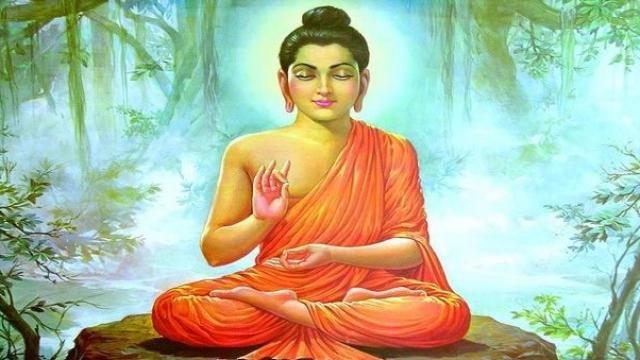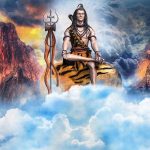Buddha Purnima: Story, Significance and History “Vesak”
Buddha Purnima – “Vesak”, the Day of the Full Moon in the month of Vishaka, is the most sacred day to millions of Buddhists around the world. It was on the Day of Vesak two and a half millennia ago, in the year 623 B.C., that the Buddha was born. It was also on the Day of Vesak that the Buddha attained enlightenment, and it was on the Day of Vesak that the Buddha in his eightieth year passed away. Even though many Buddhists observe Buddha’s historical birth on April 30th, the exact date remains in question. Although modern archaeological and historical research confirms that Prince Siddartha Gotama lived around this time.
The story of Buddha
The life story of the Buddha begins in Lumbini, near the border of Nepal and India, about 2,600 years ago, where the man Siddharta Gautama was born.
Although born a prince, he realized that conditioned experiences could not provide lasting happiness or protection from suffering. After a long spiritual search, he went into deep meditation, where he realized the nature of mind. He achieved the state of unconditional and lasting happiness: the state of enlightenment.
Siddhartha Gautama, the future Buddha, was born into a royal family in what is now Nepal, close to the border with India. Growing up, the Buddha was exceptionally intelligent and compassionate. Tall, strong, and handsome, the Buddha belonged to the Warrior caste. It was predicted that he would become either a great king or a spiritual leader. Since his parents wanted a powerful ruler for their kingdom, they tried to prevent Siddharta from seeing the unsatisfactory nature of the world. They surrounded him with every kind of pleasure. He was given five hundred attractive ladies and every opportunity for sports and excitement. He completely mastered the important combat training, even winning his wife, Yasodhara, in an archery contest.
Suddenly, at age 29, he was confronted with impermanence and suffering. On a rare outing from his luxurious palace, he saw someone desperately sick. The next day, he saw a decrepit old man, and finally a dead person. He was very upset to realize that old age, sickness and death would come to everyone he loved. Siddharta had no refuge to offer them.
The next morning the prince walked past a meditator who sat in deep absorption. When their eyes met and their minds linked, Siddhartha stopped, mesmerized. In a flash, he realized that the perfection he had been seeking outside must be within the mind itself. Meeting that man gave the future Buddha a first and enticing taste of mind, a true and lasting refuge, which he knew he had to experience himself for the good of all.
Buddha’s enlightenment
The Buddha decided he had to leave his royal responsibilities and his family in order to realize full enlightenment. He left the palace secretly and set off alone into the forest. Over the next six years, he met many talented meditation teachers and mastered their techniques. Always he found that they showed him mind’s potential but not mind itself. Finally, at a place called Bodhgaya, the future Buddha decided to remain in meditation until he knew the mind’s true nature and could benefit all beings. After spending six days and nights cutting through mind’s most subtle obstacles, he reached enlightenment on the full moon morning of May, a week before he turned thirty-five.
At the moment of full realization, all veils of mixed feelings and stiff ideas dissolved and Buddha experienced the all-encompassing here and now. All separation in time and space disappeared. Past, present, and future, near and far, melted into one radiant state of intuitive bliss. He became timeless, all-pervading awareness. Through every cell in his body, he knew and was everything. He became Buddha, the Awakened One.
After his enlightenment, Buddha travelled on foot throughout northern India. He taught constantly for forty-five years. People of all castes and professions, from kings to courtesans, were drawn to him. He answered their questions, always pointing towards that which is ultimately real.
Throughout his life, Buddha encouraged his students to question his teachings and confirm them through their own experience. This non-dogmatic attitude still characterizes Buddhism today.
Significance:
Buddhists celebrate the Buddha’s three most important life stages on Vesak: Birth, Enlightenment and Death, which traditionally are said to all have happened on the same day of the calendar throughout his life. Siddhartha Gautama, who was born in a royal family as a prince, one spotted a diseased man, an old man, a corpse during his long journey. This disturbed him deeply. Upon asking, his charioteer replied that such is the fate of every man, and no amount of material comforts could help one avoid the miseries of life and old age. It was at that instant, Prince Siddartha pledged to leave all his princely comforts behind strive for moksha. He headed towards the forest to lead a life of an ascetic.
The birth story is important because the Buddha was born in Lumbini, Nepal, while his mother stood holding onto a tree. Once born, he is said to have taken seven steps forward after which a lotus flower arose from each footstep. He then declared that this was his last rebirth and that he would become an enlightened individual. It is believed that Siddhartha Gautama attained enlightenment underneath a Bodhi tree at Bodhgaya in Bihar. He delivered his first sermon at Sarnath.
Traditions
Countries like Sri Lanka, Vietnam, Nepal, Korea, Indonesia, Laos and Malaysia celebrate Buddha Purnima with great fervour. Vesak is a day of prayers and people sit down to pray to him for peace, serenity and tranquillity. On Buddha Purnima, the statue of Buddha is placed in a basin filled with water and decorated with flowers. Devotees also sing hymns, praising Buddha and his teachings and principles. They bring along humble offerings like flowers, joss sticks and candles.
Few countries like Srilanka and Nepal ban the sale of meat and alcohol. In some countries, a ritualistic practice of releasing birds, insects and animals as a ‘symbolic act of liberation’ is also carried out on Buddha Purnima.









